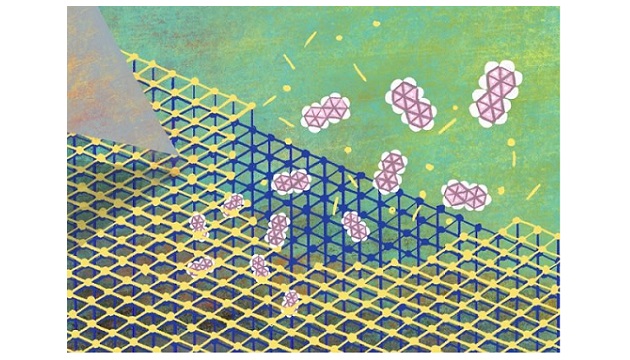Images taken using an atomic force microscope have enabled researchers from Kyoto University’s Institute for Integrated Cell-Material Sciences (iCeMS) to observe, for the first time, the flexible and dynamic changes that occur on the surfaces of porous coordination polymer (PCP) crystals when biphenyl guest molecules are introduced.
The atomic force microscope was formed using a tiny probe at the end of a cantilever. The probe’s movements over the surface of the material were recorded, providing an image of the material’s topography.
The surface of the coordination polymer crystal, which was made of zinc clusters and two types of ligands, was first examined in solution under stable conditions. The metal-organic lattices on the surface were tetragonal in shape. A biphenyl solution was then added to the crystal with a gradually increasing concentration. Images were taken every 13 seconds.
The team found that the lattices changed to a rhombic shape within 10 minutes as the biphenyl concentration reached a maximum of 500 millimoles per liter (mmol/L) of solution, due to the molecule’s combination with the crystalline surface. Decreasing the concentration led to removal of the biphenyl from the material’s surface and a rapid return of the lattices’ tetragonal shapes. Further studies showed that the surface changes barely affected the rest of the crystal’s structure.
According to the researchers, the highly responsive nature of the porous coordination polymer surface, captured in great detail, could help guide materials development.
“We were surprised to find that the porous coordination polymer surface is exceptionally flexible and constantly fluctuating in solution, contrary to the common perception that the crystal is hard and immobile,” said researcher Nobuhiko Hosono.








